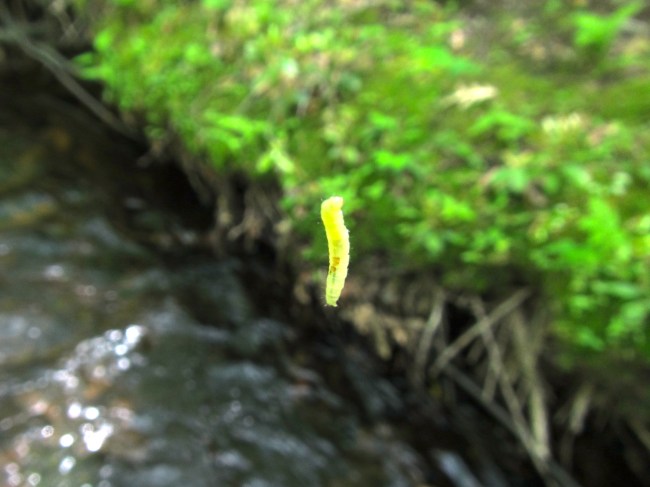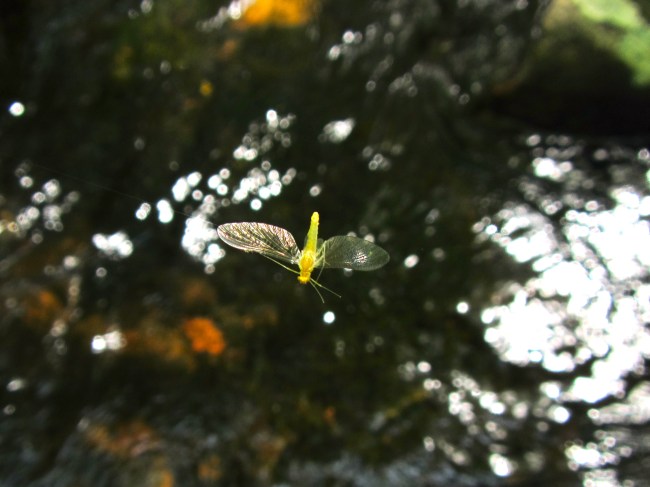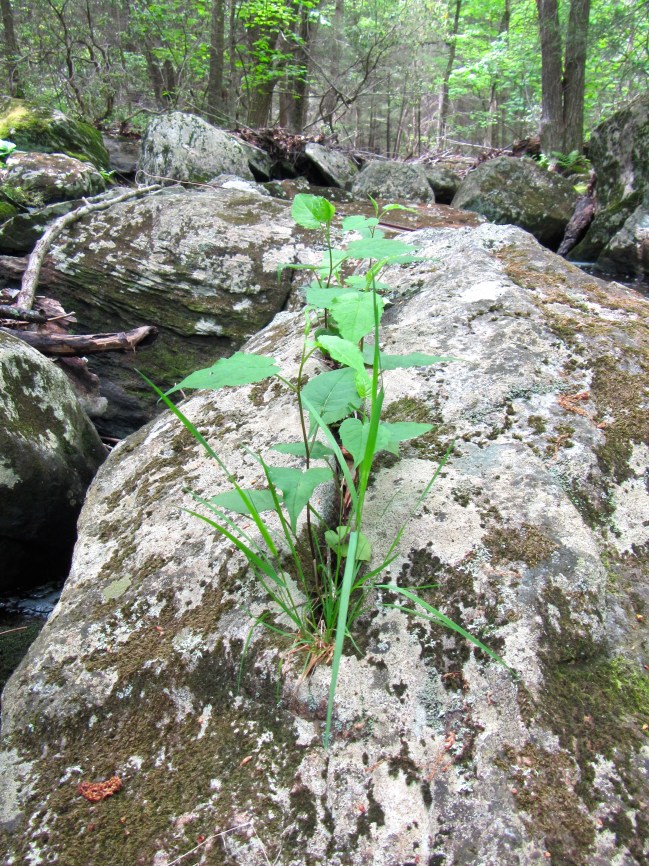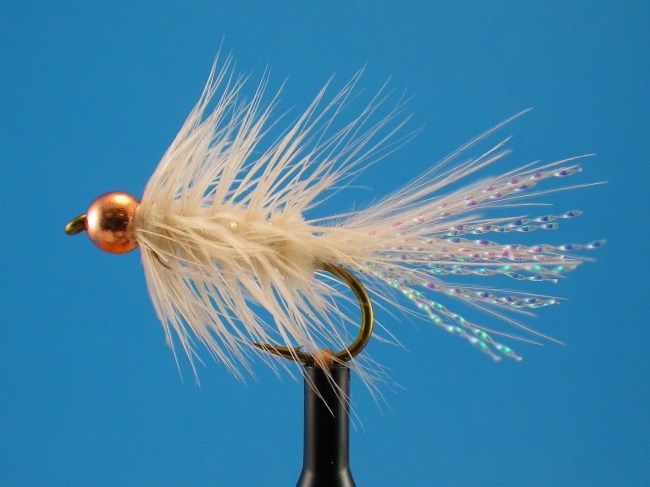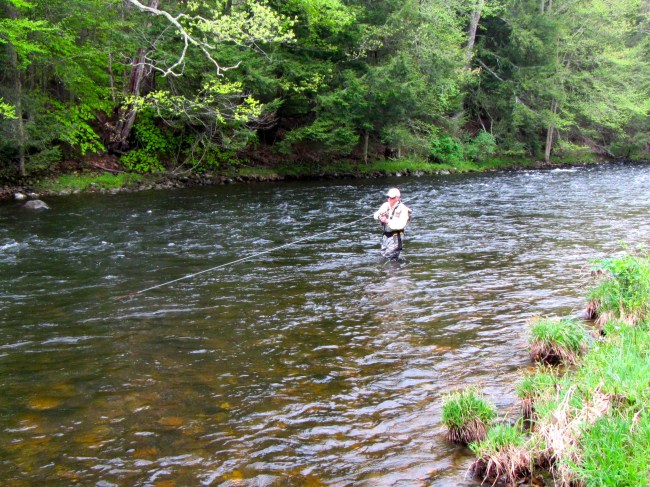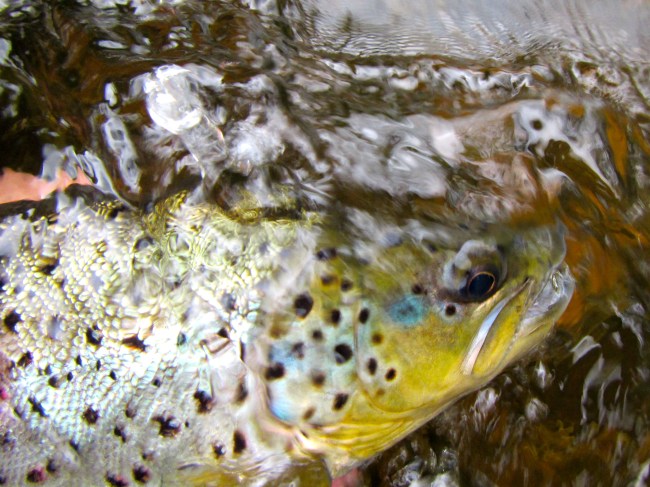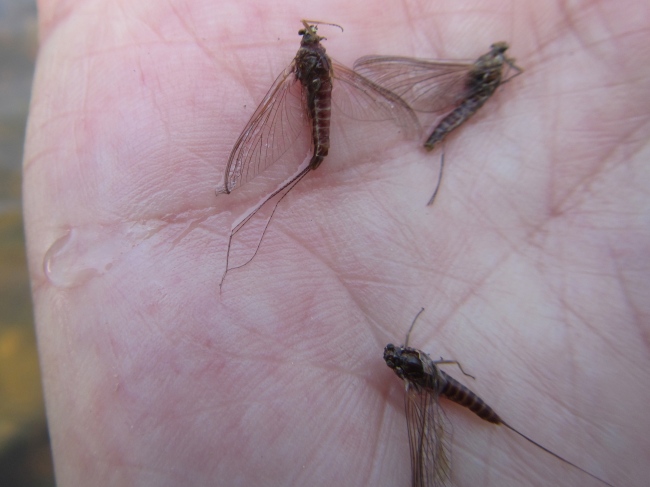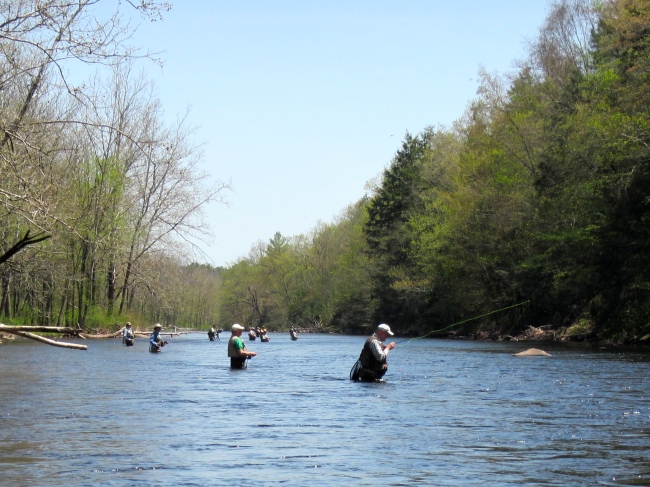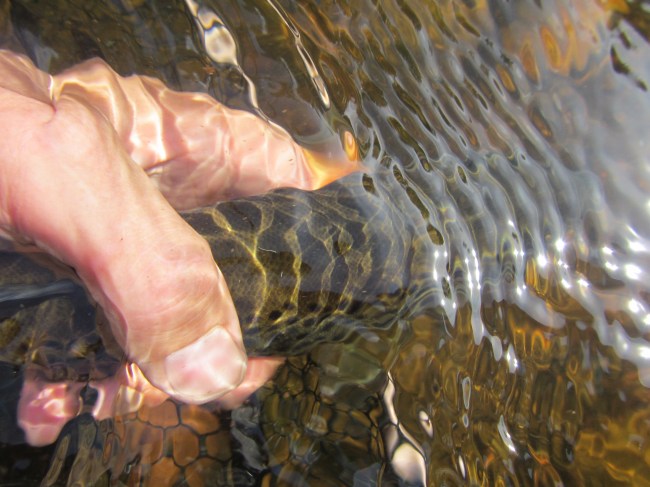Despite two strong caddis hatches, yesterday was a slow day on the Farmington River for swinging wets. I guided Jerry and Steve, and both of them did a great job presenting their wares over likely holding water. We fished hard and long, but in the end, the trout just weren’t in the mood to play. On a positive note, both guys got into trout, and the weatherman totally kicked the forecast (“numerous rain showers/thunderstorms, heavy at times” — it was sunny most of the day, and we had only one five minute-long sprinkle). Water was running cold (about 50 degrees) and 482cfs in the upper TMA. In addition to the caddis, we saw some size 16 BWOs, charcoal and cream midges, and one big honkin’ stonefly.
Stream-side meadow wildflowers, 11:30am
Late afternoon, we saw a trout rise in about two feet of water. Steve put some casts over him, and a few minutes later he was playing tug-of-war.
Steve’s co-conspirator, a halo-spotted wild brown. He took a size 10 soft-hackled bead head Pheasant Tail.




